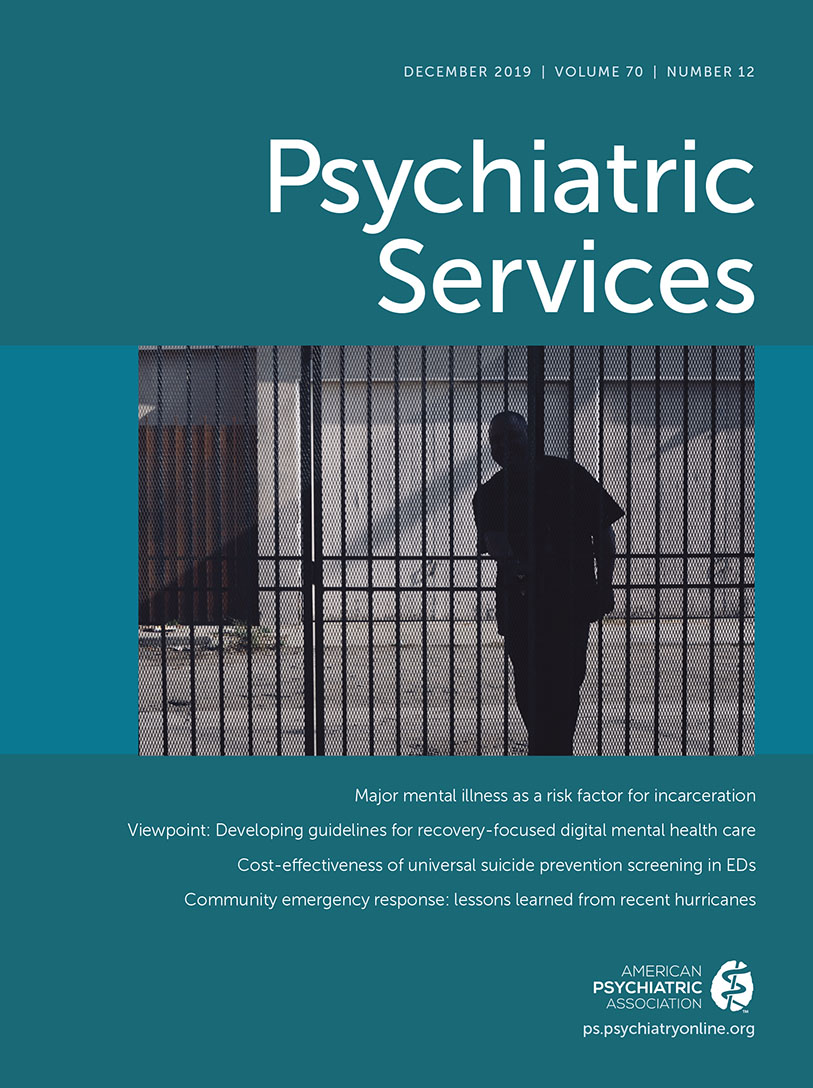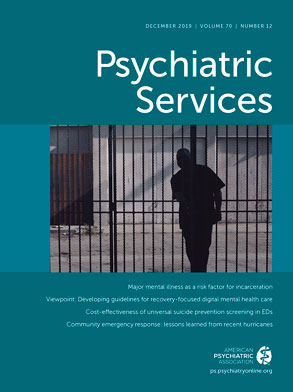Personal Recovery Among Service Users Compared With Siblings and a Control Group: A Critical Note on Recovery Assessment
Abstract
Objective:
Methods:
Results:
Conclusions:
HIGHLIGHTS
Methods
Participants
Ethical Statement
Measures
Analysis
Psychometric evaluation.
Comparisons.
Results
Psychometric Evaluation
Internal consistency.
Concurrent and divergent validity.
Exploratory associations.
Factor structure.
Comparisons
Statistical significance and effect sizes.
| Service users | ||||||||
|---|---|---|---|---|---|---|---|---|
| Not in remission (N=225) | In remission (N=336) | Siblings (N=630) | Control group (N=372) | |||||
| Factor | M | SD | M | SD | M | SD | M | SD |
| Total (all factors excluding factor 5 (no domination by symptoms) | 3.67 | .50 | 3.83 | .51 | 3.98 | .46 | 4.00 | .47 |
| Total (all factors including factor 5) | 3.63 | .49 | 3.83 | .52 | na | na | na | na |
| Factor 1: personal confidence and hope | 3.47 | .62 | 3.61 | .60 | 3.89 | .54 | 3.88 | .52 |
| Factor 2: willingness to ask for help | 3.79 | .70 | 4.00 | .77 | 3.87 | .70 | 3.90 | .66 |
| Factor 3: goal and success orientation | 3.77 | .69 | 3.88 | .68 | 4.00 | .58 | 4.02 | .62 |
| Factor 4: reliance on others | 3.90 | .61 | 4.15 | .59 | 4.25 | .54 | 4.31 | .54 |
Clinical significance.
| Service users | ||||||||||||||||
|---|---|---|---|---|---|---|---|---|---|---|---|---|---|---|---|---|
| Not in remission (N=225) | In remission (N=336) | Siblings (N=630) | Control group (N=372) | |||||||||||||
| Recovered | Not recovered | Recovered | Not recovered | Recovered | Not recovered | Recovered | Not recovered | |||||||||
| Criterion | N | % | N | % | N | % | N | % | N | % | N | % | N | % | N | % |
| A | 4b | 2 | 221b | 98 | 15b | 5 | 321b | 96 | 37b | 6 | 593b | 94 | 23b | 6 | 349b | 94 |
| B | 197b | 88 | 28b | 12 | 313b,c | 93 | 23b,c | 7 | 613d | 97 | 17d | 3 | 361c,d | 97 | 11c,d | 3 |
| C | 82b | 36 | 143b | 64 | 161c | 48 | 175c | 52 | 395d | 63 | 235d | 37 | 238d | 64 | 134d | 36 |
| Service users | ||||||||||||||||
|---|---|---|---|---|---|---|---|---|---|---|---|---|---|---|---|---|
| Not in remission (N=225) | In remission (N=336) | Siblings (N=630) | Control group (N=372) | |||||||||||||
| Recovered | Not recovered | Recovered | Not recovered | Recovered | Not recovered | Recovered | Not recovered | |||||||||
| Criterion | N | % | N | % | N | % | N | % | N | % | N | % | N | % | N | % |
| A | 6b | 3 | 219b | 97 | 9b | 3 | 327b | 97 | 33b | 5 | 597b | 95 | 20b | 5 | 352b | 95 |
| B | 190b | 84 | 35b | 16 | 305b | 91 | 31b | 9 | 604c | 96 | 26c | 4 | 361c | 97 | 11c | 3 |
| C | 55ab | 24 | 170b | 76 | 123c | 37 | 213c | 63 | 378d | 60 | 252d | 40 | 219d | 59 | 153d | 41 |
Discussion and Conclusions
Psychometric Quality
Key Findings
Implications
Strengths and Limitations
Acknowledgments
Supplementary Material
- View/Download
- 31.63 KB
References
Information & Authors
Information
Published In
History
Keywords
Authors
Competing Interests
Funding Information
Metrics & Citations
Metrics
Citations
Export Citations
If you have the appropriate software installed, you can download article citation data to the citation manager of your choice. Simply select your manager software from the list below and click Download.
For more information or tips please see 'Downloading to a citation manager' in the Help menu.
View Options
View options
PDF/EPUB
View PDF/EPUBLogin options
Already a subscriber? Access your subscription through your login credentials or your institution for full access to this article.
Personal login Institutional Login Open Athens loginNot a subscriber?
PsychiatryOnline subscription options offer access to the DSM-5-TR® library, books, journals, CME, and patient resources. This all-in-one virtual library provides psychiatrists and mental health professionals with key resources for diagnosis, treatment, research, and professional development.
Need more help? PsychiatryOnline Customer Service may be reached by emailing [email protected] or by calling 800-368-5777 (in the U.S.) or 703-907-7322 (outside the U.S.).

